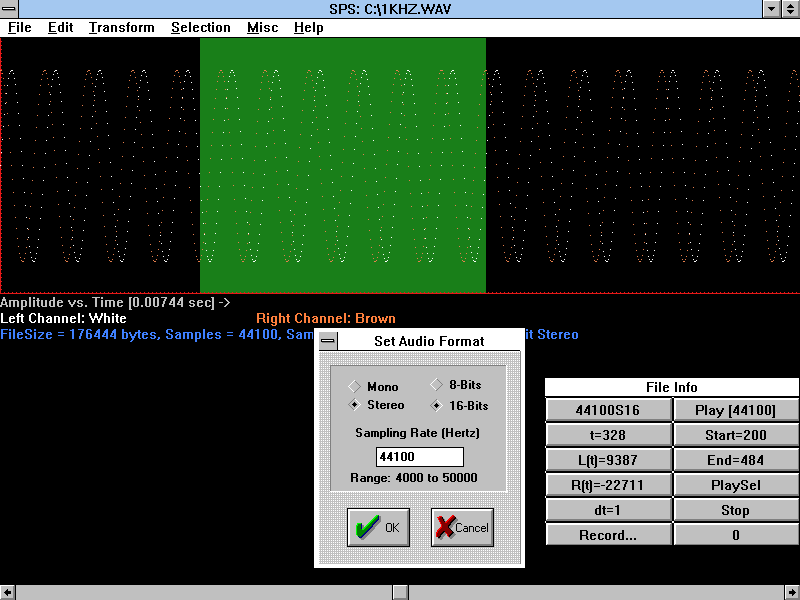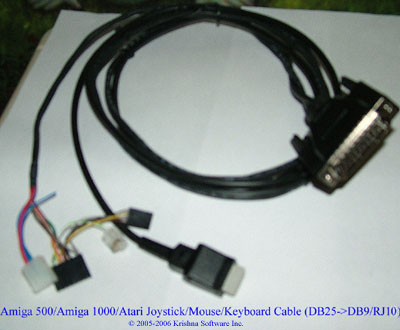
Krishna Software (also known as Krishnasoft) specializes in multimedia software production to make people happy. Our main site is at http://www.krishnasoft.com. We got involved with multimedia originally with the early models of Atari and Amiga computer systems (although "multimedia" was not the buzz word used to describe these systems). The PC standard has gradually replaced these fine machines, although these machines contain unique features not present even on modern PCs. We developed many tools for these systems for specific projects (including Smart Communications) and have integrated many of these tools and ported them to a Windows based software called MPDOS (Mutli-platform Distributive Operating System). The MPDOS Standard, Professional, and Super Professional versions are now available and work with Windows 3.x, Windows '95/'98/ME/2000/NT/XP/Vista. There are three MPDOS versions which allow one to hook up the Atari and/or Amiga computers to the PC and simulate many of the peripherals like joysticks, mice, paddles, disk drives, and keyboards. The three versions are MPDOS Standard, MPDOS Professional, and MPDOS Super Professional (SuperPro). The professional and SuperPro versions of MPDOS include mini development environments so you can write, edit, compile and upload 6502/68000 code directly to the Atari and Amiga. These versions also include a multimedia CDROM which shows how these old systems can still be used for distributive programming. There is also a distributive application-- Sound Processing Software (SPS) which now supports playback on Atari and Amiga computers via MPDOS. MPDOS Standard comes with a custom cable that attaches to the parallel port of your PC (DB25 connector) and the other end attaches to your Amiga or Atari joystick port (DB9 connector) and/or keyboard port. Currently, there are five different cables available produced by Krishna Software Inc.:
Depending on which peripherals you need to simulate and which machine you have, you would need one or more of the abovementioned cables. MPDOS has been tested with the following Atari computers so far: Atari 400, Atari 800, Atari 600XL, Atari 800XL, Atari 65XE, Atari 130XE, and Atari XEGS, but it should also work with other 6502-based Atari computers. MPDOS has been tested with the following Amiga computers: Amiga 500, Amiga 600, Amiga 1000, Amiga 1200, Amiga 2000/2500, Amiga 3000, and Amiga 4000, but should also work with other Amiga models. The joystick simulation and mouse simulation will also work with Atari ST(e) series of computers using any of the first three cables mentioned above. Click on one of the links below for more information on each version of MPDOS and on SPS which supports Atari and Amiga sound playback:

MPDOS Standard (version 1.00) features joystick simulation, mouse simulation, digitized paddle simulation, and keyboard* simulation. You can simulate the joysticks and digitized paddles on any machine which supports the DB9-based connectors found on Atari and Amiga machines. These machines include Atari 400, Atari 800, Atari 7800, Atari 2600, Amiga 500, Amiga 1000, Amiga 1200, Amiga 2000/2500, Amiga 3000, Amiga 4000, Atari 520ST, Atari 1040ST, Atari Mega ST, Commodore 64, etc. Some game consoles like the Sega 16-bit game system and Amstrad PCs will also work with MPDOS in simulating their joystick although all the buttons may not be supported. MPDOS 1.00 comes with one parallel cable that hooks up to your PC and your Atari or Amiga. The parallel cable provided is according to the Atari or Amiga machine that you specify.
There is a Digital Joystick Adapter (DJA) produced by Krishna Software Inc. which is a Y-adapter with a small circuit that splits the DB15 Atari 5200 connector into two DB9 connectors compatible with many standard Atari joystick devices and it hooks up to the DB9 connector of the parallel cable and lets you use MPDOS joystick simulation with many Atari 5200 programs including Joust, Pac-man, Wizard of Wor, Berzerk, River-raid, DigDug, Gyruss, and Frogger. This adapter is sold separately but works in conjunction with the parallel cable provided with MPDOS Standard and the Atari joystick/touchpad/keyboard controller. The Atari joystick/touchpad/keyboard controller performs the functionality of most of the Atari 5200 keypad including Start, Pause, Reset, level and number of player settings. The Digital Joystick Adapter can also be set up to operate in analog mode where you can plug in Atari 800/Atari 2600 type paddle controllers with one wire modification and use it for games like MegaMania, Kaboom, Pole Position, and Super Breakout. Instructions and schematic for the DJA are provided with the adapter.
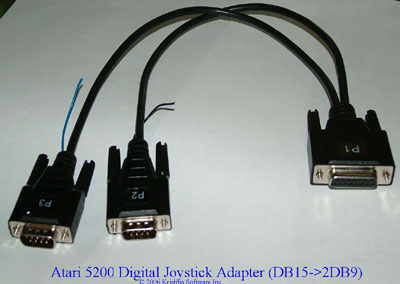
*Keyboard is fully simulated on the Amiga 500/1000/2000/2500/3000/4000 computers at the hardware level using a bi-directional parallel port on the PC. A supplied software driver is needed for keyboard simulation on the 6502-based Atari computers. Atari 1040ST keyboard simulated at hardware level supporting most output commands. PC AT keyboards and PS/2 keyboards are simulated at the hardware level with MPDOS Professional and support most output commands.
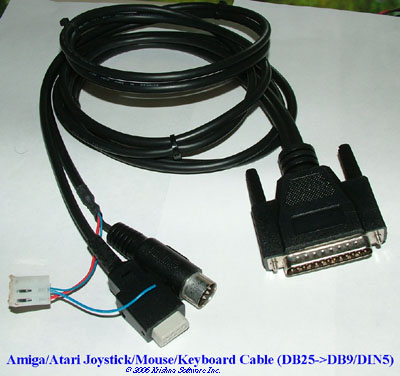
MPDOS Professional (version 1.00S) supports everything described for MPDOS Standard (joystick simulation, mouse simulation, keyboard simulation, etc.), but also adds Atari and Amiga disk drive simulation and Atari cassette player and printer simulation. You can simulate up to 4 atari disk drives using atari image disks. You can boot up your Atari machine from the image disks. Included with MPDOS Professional is KDOS4.IMG, a very fast binary program uploader that lets you upload Atari executable files directly to your Atari from your PC's hard drive bypassing image disks and using the high speed joystick port (>100Kbs). You can also write your own programs in BASIC or 6502 Assembly using Windows and have them run on your Atari. A complete multimedia CDROM is included that shows an example of distributive programming. The multimedia CDROM works on the PC and your Atari using the supplied software. It uses the GTIA chip and other custom chips on your Atari to play about 2 gigabytes of digitized audio with synchronized images and multi-lingual text streamed directly from the PC to the Atari using the joystick port. The built-in 6502 Assembler in MPDOS Professional lets you compile assembly language programs directly into image disks or executable files. There's also a DOS-based 6502 Assembler included which works with Macro Assembler or Turbo Assembler to produce Atari executable files. The on-line manual includes reference for the 6502 instruction set and for using both Assemblers to generate Atari files. Sample source code is also included. Similarly, for Amiga MPDOS Professional supports up to 4 simulated disk drives and a mini 680x0 Assembler. More information on the Amiga disk drive simulation is given in the MPDOS SuperPro section below.
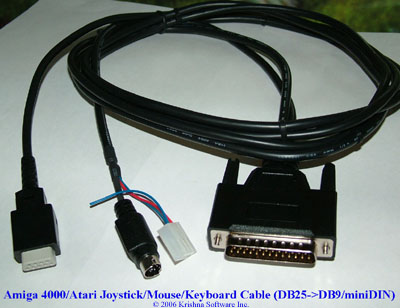
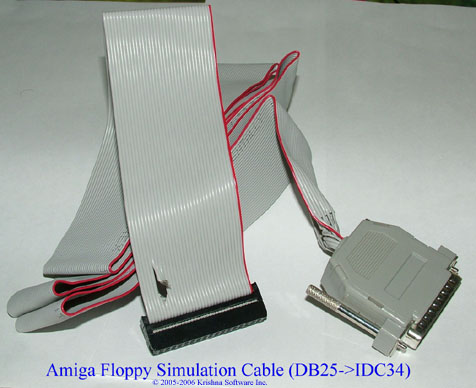
MPDOS Super Professional (or MPDOS SuperPro) supports the double DB9 cable fully and enhances the distributive programming by providing a scripting language that one can use to test/debug Atari/Amiga programs. Of course, MPDOS SuperPro contains all features of the previous versions of MPDOS. The scripting language is SSS (Simple Simulator Scripting). For example, you can inquire what is in location $A000 on Atari or Amiga by using a MOV $A000 command. It uses the Atari double DB9 or Amiga disk drive cable for the communication: DF0, DF1, DF2, and/or DF3 interface. The Amiga DB25->IDC34 cable connects to the Amiga's internal floppy drive connector and to the PC's parallel port. It lets you use Amiga image disk files to directly boot your Amiga from your PC. It supports two PC parallel ports simultaneously so it can simulate Amiga disk drives using one parallel port on the PC and use the second parallel port on the PC for simulating peripherals described for MPDOS Standard (joystick, mouse, keyboard, etc.). You can hook up both the IDC34 cable and one of the three DB9-based cables using two parallel ports. Only one parallel port is required if you just want to simulate Amiga disk drives. A complete multimedia CDROM is included that shows an example of distributive programming of using the Amiga and PC to run a complete application. The multimedia CDROM works on the PC and your Amiga using the supplied software. This software uses the Amiga custom chips on your Amiga to play about 2 gigabytes of digitized audio with synchronized images and multi-lingual text streamed directly from the PC to the Amiga using the disk drive port. It also has the option of showing the hundreds images in gray scale or in 4096 color hold-and-modify (HAM) mode on the Amiga-- converted and uploaded in real-time from the PC. With MPDOS Professional for Amiga, you get a built-in 680x0 Assembler which lets you (with some limitations) compile assembly language programs directly into Amiga image disks or Amiga executable files that run from Amiga's CLI. The on-line manual includes simple reference for the 680x0 instruction set and for using the Assembler. Currently, under version 1.00, up to 2 disk drives can be simulated simultaneously from the four available floppy devices (DF0..DF3) in read-only mode. With MPDOS Pro and SuperPro, you can boot your Amiga with your own program or with other image disks without requiring a physical floppy drive on your Amiga. In order for the disk simulation to function, the PC should have a PCI-based or other type of fast parallel port with throughput of at least one megabyte/second. Many laptops and desktop PCs do have parallel ports capable of achieving this throughput. PCI-based parallel port add-on cards are also easily available that can achieve this throughput; email us at krishna@krishnasoft.com if you need information on how to find the speed of your parallel port or to find out whether your parallel port/machines will work with the floppy drive simulation.
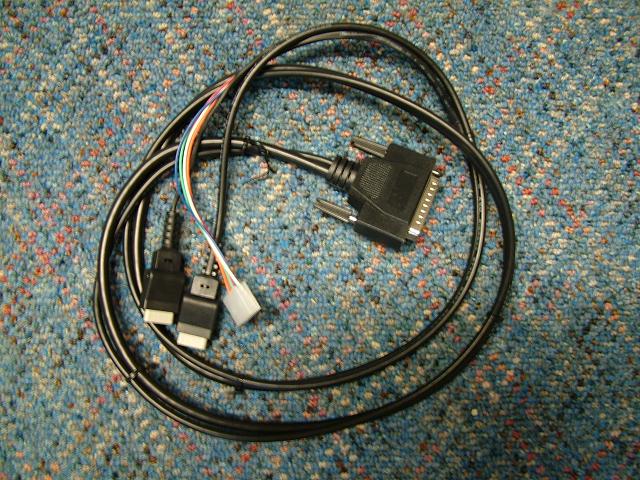
*Joystick, mouse, and keyboard simulation can share the same double DB9 cable or map joystick input from another parallel port into another.
The Sound Processing Software (SPS) is a very flexible program written for Windows 3.x and Windows '95/'98/ME/2000/XP to help edit, record, play, and convert audio waveforms. It is very easy to use and can be used by anyone - not just technical computer users. It is very fast in most operations. It supports lossless data compression and produces compressed SDB (Sound DataBase) files or the standard WAV files. The lossless compression is great for archiving sound files without losing any information. It achieves very good lossless sound compression for waveforms from 1..8 bits and 16-bits. Using MPDOS described above, SPS can also be used to upload audio files to the Atari and Amiga for playback. It uses the 5-bit DAC simulation on the Atari to create higher quality sounds on the Atari. It can play back audio files on the Amiga in simulated stereo mode so both the left and right audio jacks are used.
